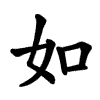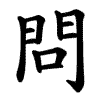Definify.com
Definition 2025
學
學
Translingual
| Stroke order | |||
|---|---|---|---|

| |||
| Stroke order (alternative) | |||
|---|---|---|---|

| |||
Han character
學 (radical 39 子+13, 16 strokes, cangjie input 竹月弓木 (HBND), four-corner 77407, composition ⿱𦥯子)
Descendants
References
- KangXi: page 280, character 28
- Dai Kanwa Jiten: character 7033
- Dae Jaweon: page 549, character 27
- Hanyu Da Zidian: volume 2, page 1019, character 11
- Unihan data for U+5B78
Chinese
| trad. | 學 | |
|---|---|---|
| simp. | 学 | |
| alt. forms |
斆 斅 斈 |
|
Glyph origin
| Historical forms of the character 學
| |||
|---|---|---|---|
| Oracle bone script | Bronze inscriptions | Large seal script | Small seal script |
 |
 |
 |
 |
| Characters in the same phonetic series (學) (Zhengzhang, 2003) | |
|---|---|
| Old Chinese | |
| 攪 | *kruːʔ |
| 覺 | *kruːɡs, *kruːɡ |
| 澩 | *ɡruːʔ, *sɡruːɡ, *ɡruːɡ |
| 斆 | *ɡruːɡs |
| 鱟 | *ɡoːɡs, *quːɡ |
| 嶨 | *kʰruːɡ, *ɡruːɡ |
| 礐 | *kʰruːɡ, *ɡ·rɯːɡ, *ɡoːɡ, *ɡuːɡ |
| 觷 | *ŋɡruːɡ, *ɡruːɡ, *quːɡ |
| 學 | *ɡruːɡ |
| 鷽 | *ɡruːɡ, *qruːɡ |
Ancient forms: 斆, 斅. The former is constructed from the skeleton of 敎/教 (“to teach”) with the addition of two extra components: 1) a 臼-like component around the top-left 爻 part, signifying hands (hands-on learning); 2) a 冖 (“cover”) over 子 (“child”), representing the cover of a building or school, i.e. the child learns in a roofed place. Shuowen regards 臼 as the phonetic component in the character, which may be true according to some Old Chinese reconstructions such as that of Pan Wuyun's, though probably not others. See 教 for more.
Etymology
May be an endopassive derivation of 覺 (OC *kruːɡs, *kruːɡ, “to awake, get insight”).
Pronunciation
- Mandarin
- Cantonese (Jyutping): hok6
- Hakka (Sixian, PFS): ho̍k
- Jin (Wiktionary): xyeh5
- Min Dong (BUC): ŏ̤h / hŏk
- Min Nan
- Wu (Wiktionary): hhoq (T5); hhiaq (T5)
- Mandarin
- (Standard Chinese, Beijing)+
- Pinyin:
- Zhuyin: ㄒㄩㄝˊ
- Wade-Giles: hsüeh2
- Gwoyeu Romatzyh: shyue
- IPA (key): /ɕɥ̯œ³⁵/
-

- (Standard Chinese, Beijing)+
- Pinyin:
- Zhuyin: ㄒㄧㄠˊ
- Wade-Giles: hsiao2
- Gwoyeu Romatzyh: shyau
- IPA (key): /ɕi̯ɑʊ̯³⁵/
- Note: xué - major reading (colloquial and literary); xiáo - rare, very colloquial or dialectal, used in xiangsheng.
- (Standard Chinese, Beijing)+
- Cantonese
- (Standard Cantonese, Guangzhou)+
- Jyutping: hok6
- Yale: hohk
- Cantonese Pinyin: hok9
- IPA (key): /hɔːk̚²/
- (Standard Cantonese, Guangzhou)+
- Hakka
- (Sixian, incl. Miaoli and Meinong)
- Pha̍k-fa-sṳ: ho̍k
- Hakka Romanization System: hog
- Hagfa Pinyim: hog6
- IPA: /hok̚⁵/
- (Sixian, incl. Miaoli and Meinong)
- Jin
- Min Dong
- (Fuzhou)
- Bàng-uâ-cê: ŏ̤h / hŏk
- IPA (key): /oʔ⁵/, /houʔ⁵⁵/
- Note: ŏ̤h - vernacular; hŏk - literary.
- (Fuzhou)
- Min Nan
- (Hokkien)
- Pe̍h-ōe-jī: o̍h / ha̍k
- Tâi-lô: o̍h / ha̍k
- Phofsit Daibuun: oih, hak
- IPA (Xiamen): /ɤʔ⁴/, /hak̚⁴/
- IPA (Quanzhou): /ɤʔ²⁴/, /hak̚²⁴/
- IPA (Zhangzhou): /ɤʔ¹²¹/, /hak̚¹²¹/
- IPA (Taipei): /oʔ⁴/, /hak̚⁴/
- IPA (Kaohsiung): /ɤʔ⁴/, /hak̚⁴/
- Note: o̍h - vernacular; ha̍k - literary.
- (Teochew)
- Peng'im: oh8 / hag8
- Pe̍h-ōe-jī-like: o̍h / ha̍k
- IPA (key): /oʔ⁴/, /hak̚⁴/
- Note: oh8 - vernacular; hag8 - literary.
- (Hokkien)
- Wu
- (Shanghainese)
- Wiktionary: hhoq (T5); hhiaq (T5)
- IPA (key): /ɦʊʔ¹²/, /ɦiᴀʔ¹²/
- Note: 5hhoq - vernacular; 5hhiaq - literary.
- (Shanghainese)
- Dialectal data▼
| Variety | Location | 學 |
|---|---|---|
| Mandarin | Beijing | /ɕyɛ³⁵/ |
| Harbin |
/ɕiau²⁴/ /ɕyɛ²⁴/ |
|
| Tianjin |
/ɕiɑu⁴⁵/ /ɕye⁴⁵/ |
|
| Jinan | /ɕyə⁴²/ | |
| Qingdao | /ɕyə⁴²/ | |
| Zhengzhou | /ɕyo⁴²/ | |
| Xi'an | /ɕyo²⁴/ | |
| Xining | /ɕyu²⁴/ | |
| Yinchuan |
/ɕye¹³/ /ɕye⁵³/ |
|
| Lanzhou | /ɕyə⁵³/ | |
| Ürümqi | /ɕyɤ⁵¹/ | |
| Wuhan | /ɕio²¹³/ | |
| Chengdu | /ɕyo³¹/ | |
| Guiyang | /ɕio²¹/ | |
| Kunming | /ɕio³¹/ | |
| Nanjing | /ɕioʔ⁵/ | |
| Hefei | /ɕyɐʔ⁵/ | |
| Jin | Taiyuan | /ɕyəʔ⁵⁴/ |
| Pingyao | /ɕiʌʔ⁵³/ | |
| Hohhot |
/ɕyaʔ⁴³/ ~习 /ɕiɔ³¹/ ~话 |
|
| Wu | Shanghai |
/ɦoʔ¹/ /ɦiaʔ¹/ |
| Suzhou |
/ɦioʔ³/ /ɦoʔ³/ |
|
| Hangzhou | /ɦiɑʔ²/ | |
| Wenzhou | /ɦo²¹³/ | |
| Hui | Shexian |
/ɕiɔ²²/ /xɔ²²/ |
| Tunxi | /xo¹¹/ | |
| Xiang | Changsha | /ɕio²⁴/ |
| Xiangtan | /ɕio²⁴/ | |
| Gan | Nanchang | /hɔʔ²/ |
| Hakka | Meixian | /hok̚⁵/ |
| Taoyuan | /hok̚⁵⁵/ | |
| Cantonese | Guangzhou | /hɔk̚²/ |
| Nanning | /hɔk̚²²/ | |
| Hong Kong | /hɔk̚²/ | |
| Min | Xiamen (Min Nan) |
/hak̚⁵/ /oʔ⁵/ |
| Fuzhou (Min Dong) | /oʔ⁵/ | |
| Jian'ou (Min Bei) |
/xa²⁴/ /ɔ⁴²/ |
|
| Shantou (Min Nan) |
/hak̚⁵/ /oʔ⁵/ |
|
| Haikou (Min Nan) |
/hiɔk̚⁵/ /o³³/ |
| Rime | |
|---|---|
| Character | 學 |
| Reading # | 1/1 |
| Initial (聲) | 匣 (33) |
| Final (韻) | 覺 (10) |
| Tone (調) | Checked (Ø) |
| Openness (開合) | Open |
| Division (等) | II |
| Fanqie | 胡覺切 |
| Reconstructions | |
| Zhengzhang Shangfang |
/ɦˠʌk̚/ |
| Pan Wuyun |
/ɦᵚɔk̚/ |
| Shao Rongfen |
/ɣɔk̚/ |
| Edwin Pulleyblank |
/ɦaɨwk̚/ |
| Li Rong |
/ɣɔk̚/ |
| Wang Li |
/ɣɔk̚/ |
| Bernard Karlgren |
/ɣɔk̚/ |
| Expected Mandarin Reflex |
xué |
| Baxter-Sagart system 1.1 (2014) | |
|---|---|
| Character | 學 |
| Reading # | 1/1 |
| Modern Beijing (Pinyin) |
xué |
| Middle Chinese |
‹ hæwk › |
| Old Chinese |
/*m-kˤruk/ |
| English | study; imitate |
Notes for Old Chinese notations in the Baxter-Sagart system: * Parentheses "()" indicate uncertain presence; | |
| Zhengzhang system (2003) | |
|---|---|
| Character | 學 |
| Reading # | 1/1 |
| No. | 14079 |
| Phonetic component |
學 |
| Rime group |
覺 |
| Rime subdivision |
1 |
| Corresponding MC rime |
學 |
| Old Chinese |
/*ɡruːɡ/ |
| Notes | 甲文象習持爻於膝前,金文方加子 |
Definitions
學
- † to comprehend; to realise; to understand
- to learn; to study
- to imitate; to copy; to mimic
- school
- learning; knowledge
- theory; doctrine
- subject; branch of learning; science; -ology
Synonyms
- 學習/学习 (xuéxí, “to study, to learn”)
- 讀書/读书 (dúshū, “to study”)
- 念書/念书 (niànshū, “(colloquial) to study”)
Compounds
|
|
|
Japanese
Kanji
(uncommon “Hyōgai” kanji, kyūjitai kanji, shinjitai form 学)
- This term needs a translation to English. Please help out and add a translation, then remove the text
{{rfdef}}.
Readings
Compounds
Korean
Hanja
學 • (hak)
Eumhun:
- Sound (hangeul): 학 (revised: hak, McCune-Reischauer: hak, Yale: hak)
- Name (hangeul): 배우다 (revised: bae-uda, McCune-Reischauer: paeuda, Yale: pay.uta)
Vietnamese
Han character
學 (học, hục)
Compounds
- 學習 (học tập)
- 哲學 (triết học)
- 神學 (thần học)
- 學生 (học sinh)
- 大學 (đại học)
- 科學 (khoa học)
- 小學 (tiểu học)
- 𠰺學 (dạy học)
- 中學 (trung học)
- 儒學 (Nho học)
- 化學 (hoá học)
- 場學 (trường học)
- 學院 (học viện)
- 生學 (sinh học)
- 藥學 (dược học)
- 人類學 (nhân loại học)
- 分類學 (phân loại học)
- 動物學 (động vật học)
- 場大學 (trường đại học)
- 場小學 (trường tiểu học)
- 地質學 (địa chất học)
- 考古學 (khảo cổ học)
- 古生物學 (cổ sinh vật học)
Usage notes
- Chữ Nôm. The modern Vietnamese equivalent is học.
- This is the regular form of the character. The common form is 学.